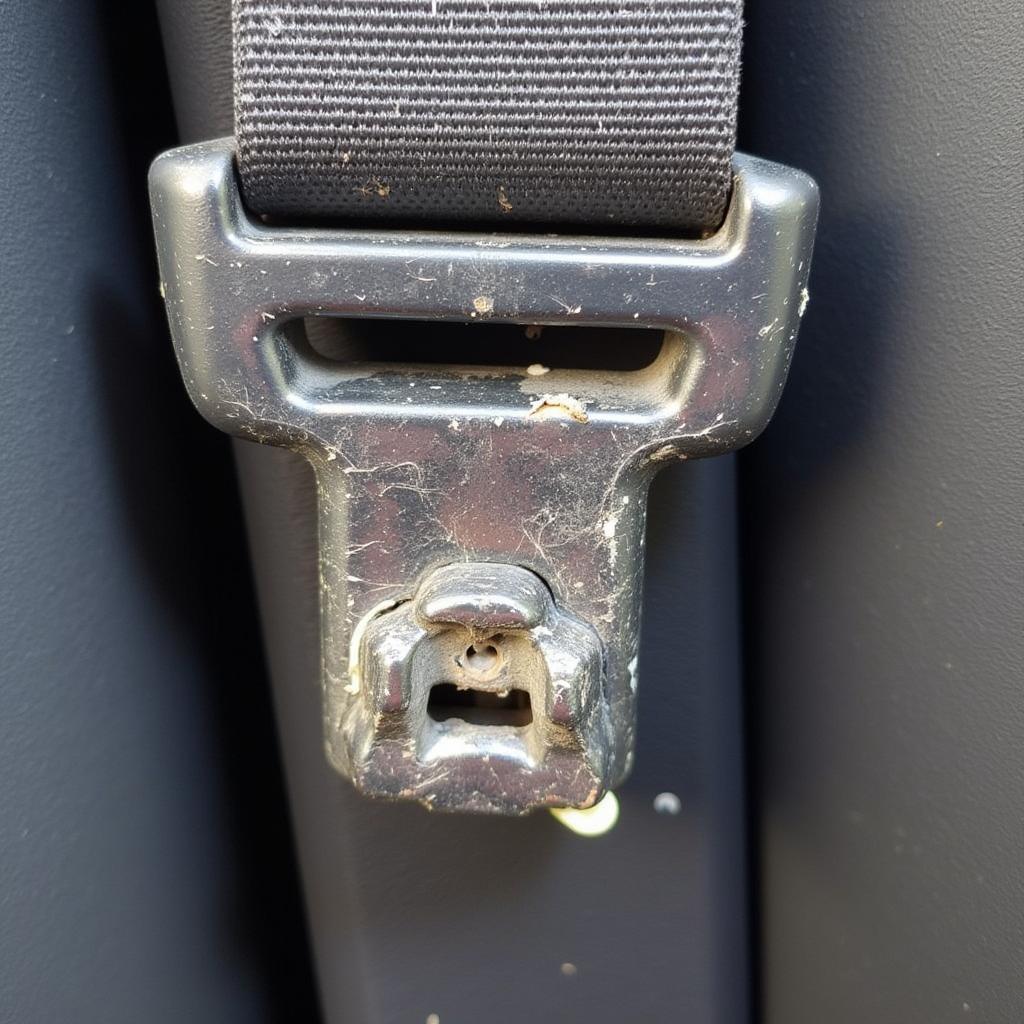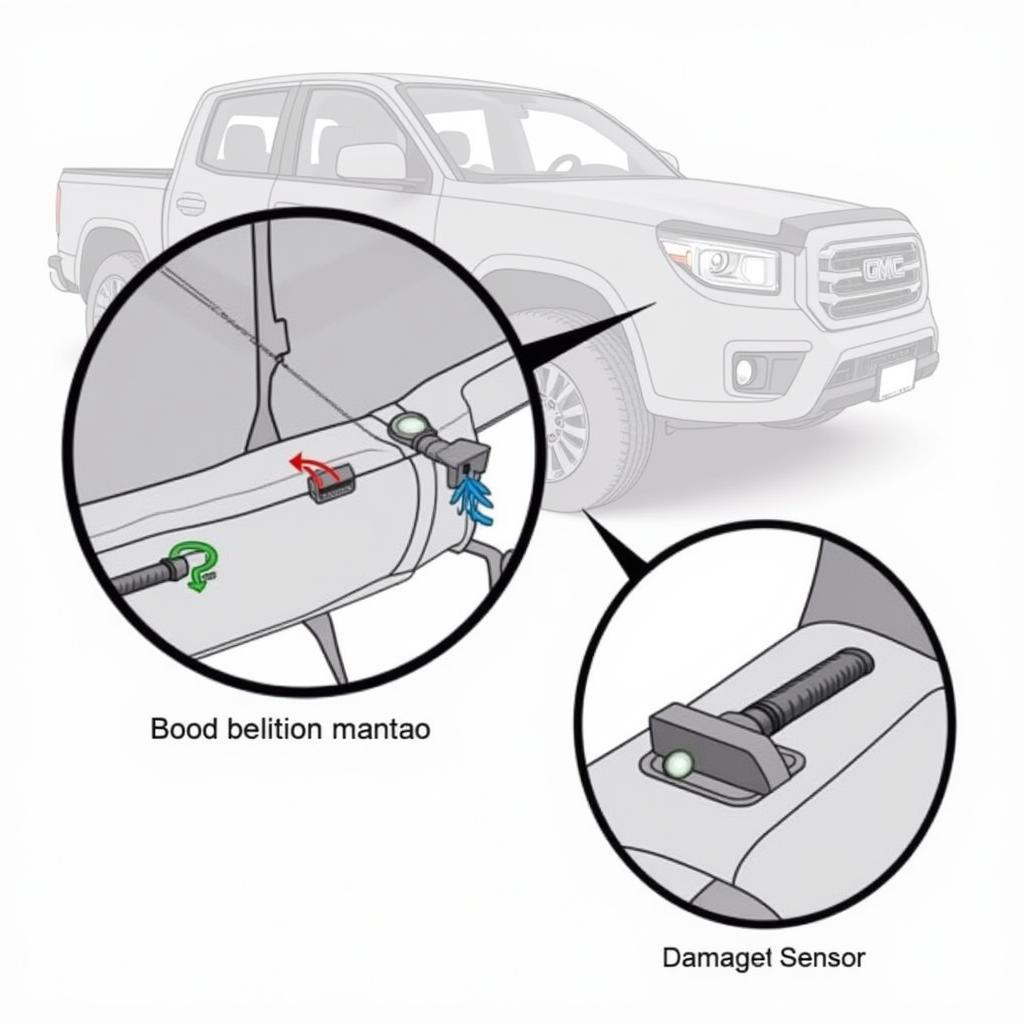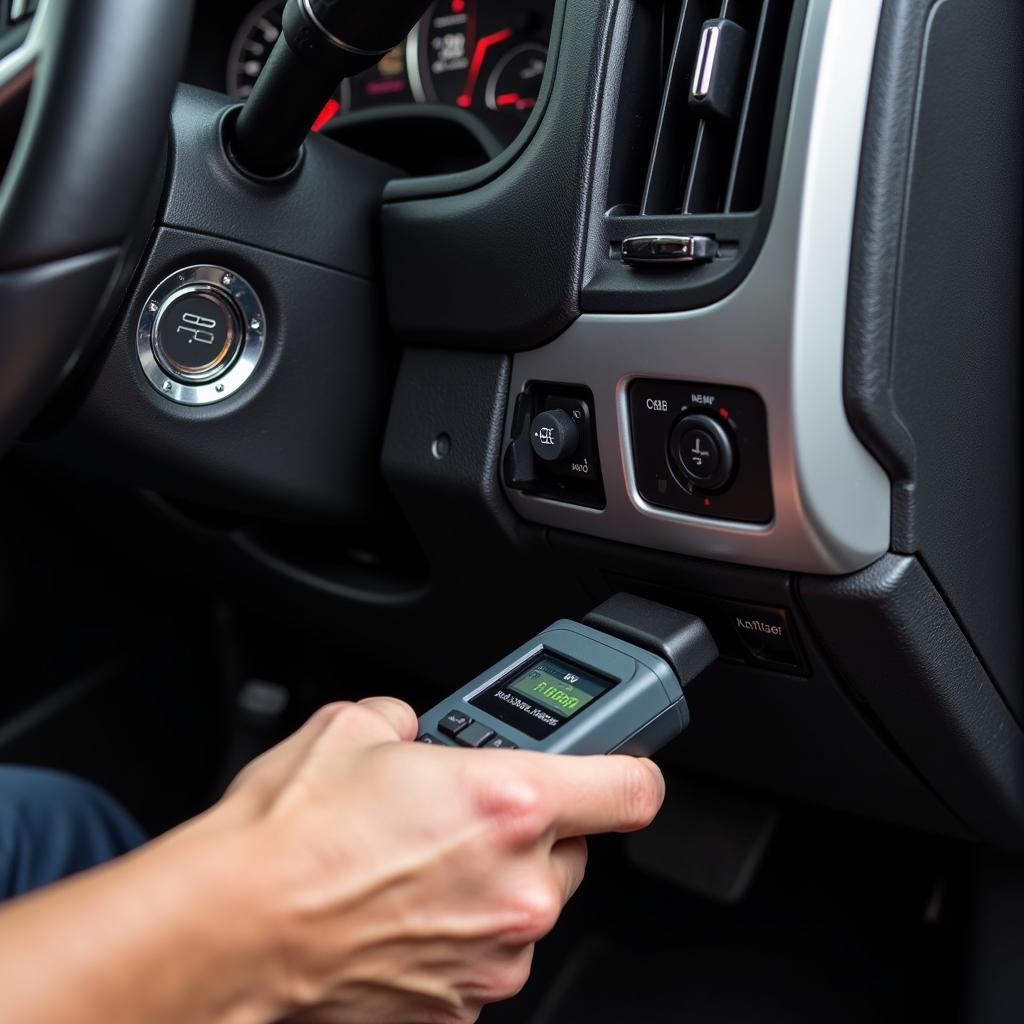The GMC Canyon seat belt warning light is a crucial safety feature designed to remind drivers and passengers to buckle up. When functioning correctly, it illuminates when the ignition is on and a seat is occupied but the belt remains unfastened. However, if you’re facing a persistent warning light even when all belts are secured, it signals a potential issue requiring attention. This comprehensive guide dives into the common causes behind a malfunctioning GMC Canyon seat belt warning light and offers practical solutions to address them.
Decoding the Warning: Understanding the Seat Belt System
Before troubleshooting, it’s essential to grasp the basics of the seat belt system. It comprises several components, including:
- Seat Belt Buckle: The part you click into the receptacle to secure the belt.
- Seat Belt Pretensioners: These activate during a collision to tighten the belt and restrict passenger movement.
- Seat Belt Warning Light Sensor: This sensor detects whether the buckle is engaged and sends signals to the vehicle’s computer.
A fault in any of these components can trigger the warning light.
Common Culprits Behind a Glowing Warning Light
Here are the most prevalent reasons your GMC Canyon’s seat belt warning light might be on:
1. Faulty Seat Belt Buckle
 GMC Canyon Faulty Seat Belt Buckle
GMC Canyon Faulty Seat Belt Buckle
The most frequent offender is a malfunctioning seat belt buckle. Over time, wear and tear, dirt accumulation, or spilled liquids can impede its functionality, leading to a false warning light.
Solution: Begin by inspecting the buckle for visible damage or obstructions. Try cleaning the buckle mechanism with compressed air or a cotton swab and electrical contact cleaner. If cleaning doesn’t resolve the issue, replacing the buckle is often the most effective solution.
2. Seat Belt Warning Light Sensor Malfunction
 GMC Canyon Seat Belt Sensor Malfunction
GMC Canyon Seat Belt Sensor Malfunction
The sensor responsible for detecting buckle engagement can also malfunction. This can occur due to a wiring issue, sensor damage, or software glitches.
Solution: Diagnosing a faulty sensor often requires specialized diagnostic tools. If you suspect a sensor problem, consulting a qualified mechanic or dealership is advisable. They can read the vehicle’s diagnostic trouble codes (DTCs) to pinpoint the exact issue and recommend the appropriate repair or replacement.
3. Software Glitches in the Vehicle’s Computer
Modern vehicles rely heavily on software. Occasionally, glitches in the vehicle’s computer system can trigger false warnings, including the seat belt light.
Solution: In such cases, a simple software update can often rectify the problem. Dealerships and some independent mechanics have the tools to perform these updates.
4. Damaged Wiring Harness
The wiring harness connecting the seat belt system components can become damaged due to wear, rodent damage, or improper installation of aftermarket accessories. A break or short in the wiring can disrupt the signal flow, causing the warning light to illuminate.
Solution: This issue necessitates a thorough inspection of the wiring harness. If you’re comfortable with electrical work, you can visually inspect the harness for obvious damage. However, seeking professional assistance is recommended for a more comprehensive diagnosis and repair.
Advanced Troubleshooting: When Basic Fixes Don’t Suffice
 GMC Canyon Diagnostics
GMC Canyon Diagnostics
If basic troubleshooting steps haven’t resolved the problem, more advanced diagnostics might be necessary. This typically involves using a specialized scan tool to read the vehicle’s DTCs. These codes provide specific insights into the nature of the fault, allowing for a more targeted repair.
Expert Insight: “Many car owners underestimate the complexity of modern vehicle electronics,” says automotive electrician Mark Williams. “While simple fixes work sometimes, a persistent seat belt warning light often requires professional diagnostics to pinpoint the root cause.”
Ignoring the Warning: Risks and Consequences
Dismissing a persistent seat belt warning light is never advisable. Beyond the annoyance, it signifies a potential safety hazard. A malfunctioning seat belt system may not perform optimally in a collision, increasing the risk of severe injuries.
Maintaining a Safe Ride: Proactive Tips
Here are some preventive measures to minimize the chances of encountering seat belt warning light issues:
- Regular Inspections: Periodically check your seat belt buckles for wear, dirt, or damage.
- Careful Cleaning: Clean the buckles gently with compressed air or a damp cloth, avoiding harsh chemicals.
- Professional Installation: When adding aftermarket accessories, ensure professional installation to prevent wiring harness damage.
By understanding the common causes, solutions, and preventive measures, you can ensure your GMC Canyon’s seat belt system functions flawlessly, keeping you and your passengers safe on the road. Remember, if you’re unsure about any aspect of diagnosing or repairing the system, seeking professional help is always the safest approach.
Frequently Asked Questions
Q1: Can I drive my GMC Canyon with the seat belt warning light on?
While technically possible, it’s strongly discouraged. The light indicates a potential issue with the seat belt system, which could compromise safety in a collision.
Q2: How much does it cost to fix a GMC Canyon seat belt warning light issue?
The cost varies widely depending on the root cause. A simple buckle replacement might cost under $100, while a complex wiring harness repair could exceed $500.
Q3: Are aftermarket seat belt buckles reliable?
While cheaper, aftermarket buckles may not meet the same safety standards as OEM parts. Opting for genuine GMC parts ensures optimal quality and compatibility.
Q4: Can I reset the seat belt warning light myself?
In some cases, disconnecting the vehicle’s battery for a few minutes might temporarily reset the light. However, this doesn’t address the underlying issue and isn’t a guaranteed fix.
Q5: Does my GMC Canyon need a software update?
Software updates can sometimes resolve glitches triggering false warning lights. It’s advisable to check with your dealership or a qualified mechanic about available updates for your vehicle’s model year.
